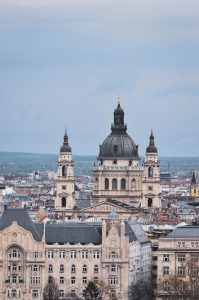
The editors advise travelers to discover the 150-year-old city from a new perspective.Continue reading

One hundred and fifty years ago, on 17 November 1873, Budapest was created by the merger of Pest, Buda and Óbuda. The free royal capitals of Buda and Pest, as well as the field town of Old Buda and Margaret Island, the latter having been carved out of Pest County, shall be united into one jurisdiction under the name of Buda-Pest Capital.
The process, which lasted for a year, came to an end with the Assembly of Honor on 17 November 1873, when the Metropolitan Council began its work – in commemoration of which, by decision of the Budapest City Assembly of 21 March 1991, 17 November is the capital’s public holiday.

The unification of Pest and Buda was first suggested by István Széchenyi in the 1830s, who also proposed the name Budapest. After the War of Independence, the siege of Pest was lifted in 1854 and the city soon became an economic, commercial and intellectual center, with the government offices in Buda, which gave the right bank of the city its weight.

The first mayor was Károly Kamermayer. Even before unification, the Andrássy government had drawn up plans for the creation of a modern metropolis, the redevelopment of the Danube riverbank, the construction of bridges, roads, ports and public warehouses. To this end, a State Treasury was set up with a 24 million forint loan from the state, and as early as 1870 the Budapest Public Works Council was established.

At the time of the unification, Buda had 54,000 inhabitants, Pest 200,000 and Old Buda 16,000, and by 1890 this number had exceeded half a million, and while in 1870 Pest-Buda was still the 17th largest European city, in 1900 Budapest was already the eighth.

The capital will celebrate the 150th anniversary of the unification of Pest, Buda and Óbuda with a spectacular program of events from 17-19 November.
Featured Image: Pixabay